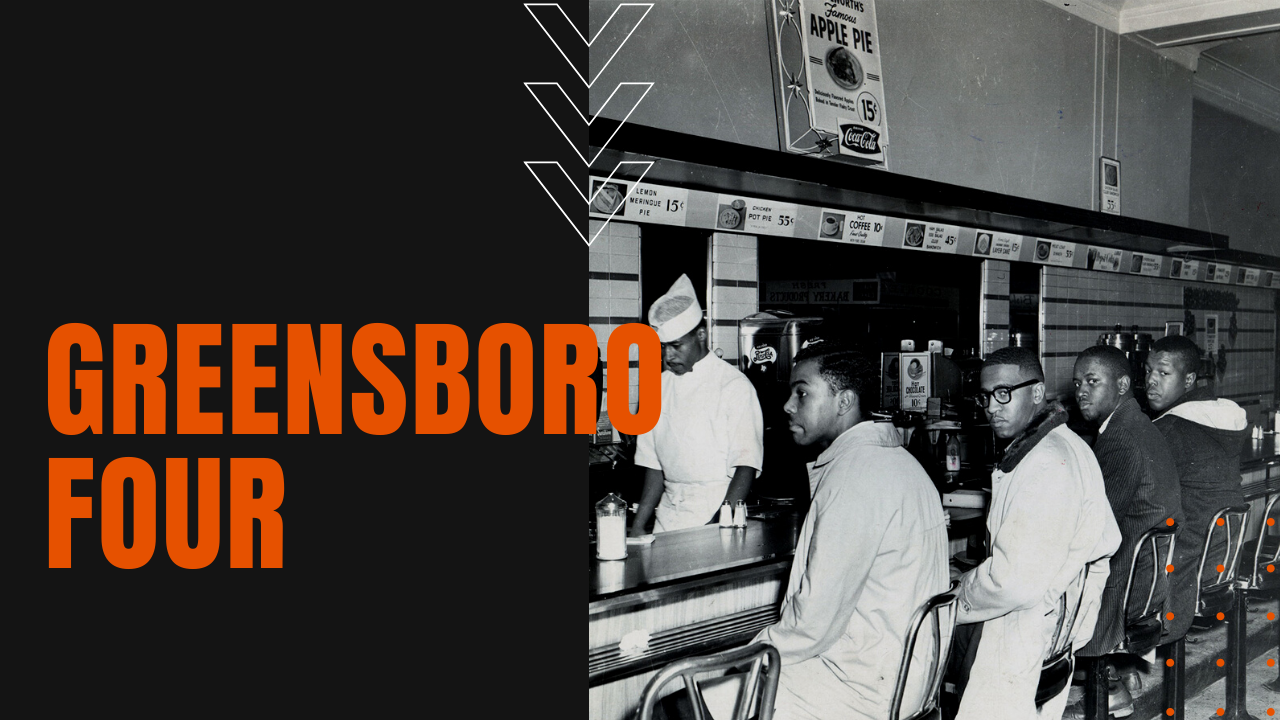Greensboro Four Make Civil Rights History

When four black college students refused to vacate a white’s only lunch counter in Greensboro, North Carolina, the civil rights sit-in movement of 1960 would spread across the South like wildfire, elevating the civil rights movement to a new level of national awareness.
Who Were the Greensboro Four?
Influenced heavily by Mahatma Gandhi’s nonviolent protest philosophy, Ezell Blair Jr., David Richmond, Franklin McCain and Joseph McNeil refused to vacate a Woolworth lunch counter after they were refused service for the color of their skin.
All four were students from the nearby North Carolina Agricultural and Technical College, while their activist agenda was further inspired by the Freedom Riders, who tested the clout of the supreme court’s recent decision banning segregation on interstate bus travel.
Other underlying motivation came from the brutal 1955 murder of Emmett Till, who had allegedly whistled at a white woman in a Mississippi store. Assisted by local white businessman, Ralph Johns, on February 1st, 1960, the four students sat down at the lunch counter at Woolworth’s, where the official policy was to refuse service to anyone but whites.
Greensboro Sit-In
When the four young men refused to leave, police were called to the scene, but were unable to take any action due to the complete lack of provocation on the part of the four students.
By that time, Johns had alerted local media, who arrived in full force to cover the events on television. The four stayed until the store closed for the night, returning the next day with more student activists from other local colleges.
By February 5th, some 300 students had joined the protest at Woolworth’s, paralyzing the lunch counter and other downtown businesses. Heavy television coverage of the Greensboro sit-ins sparked a sit-in movement that spread rapidly to college towns throughout the South and then up into the North, as young blacks and whites joined in various forms of peaceful protest against segregationist policies, including libraries, beaches, hotels and other white’s only establishments.
While white pushback was frequently contentious, by the end of March, the movement had spread to 55 cities in 13 states, forcing previously segregated enterprises to quietly integrate by the summer of 1960.
Today, the former Greensboro Woolworth’s where the first sit-in took place now houses the International Civil Rights Center and Museum, which features a restored version of the lunch counter where the Greensboro Four first sat, while part of the original lunch counter is now on display at the Smithsonian National Museum of American History.
